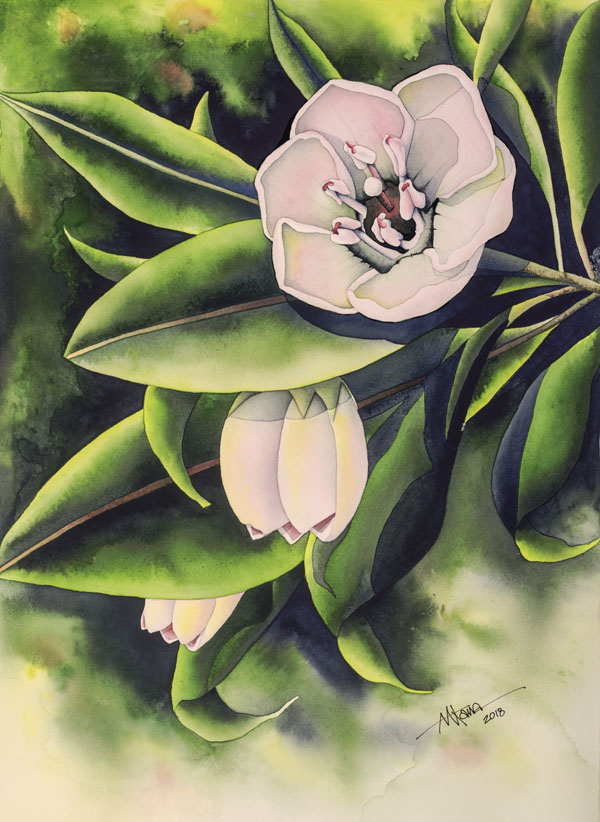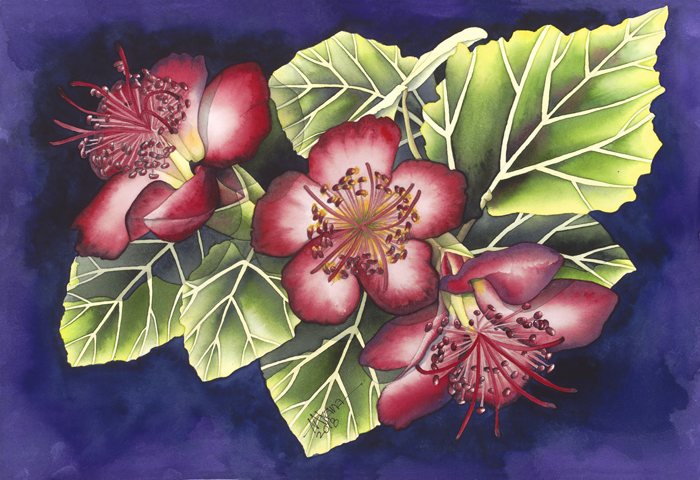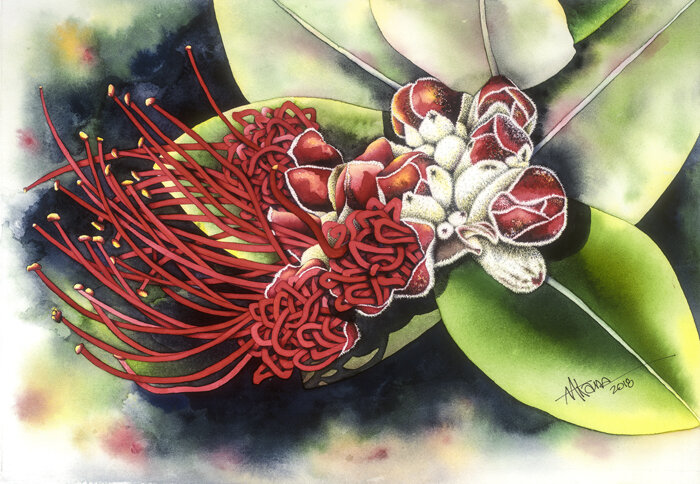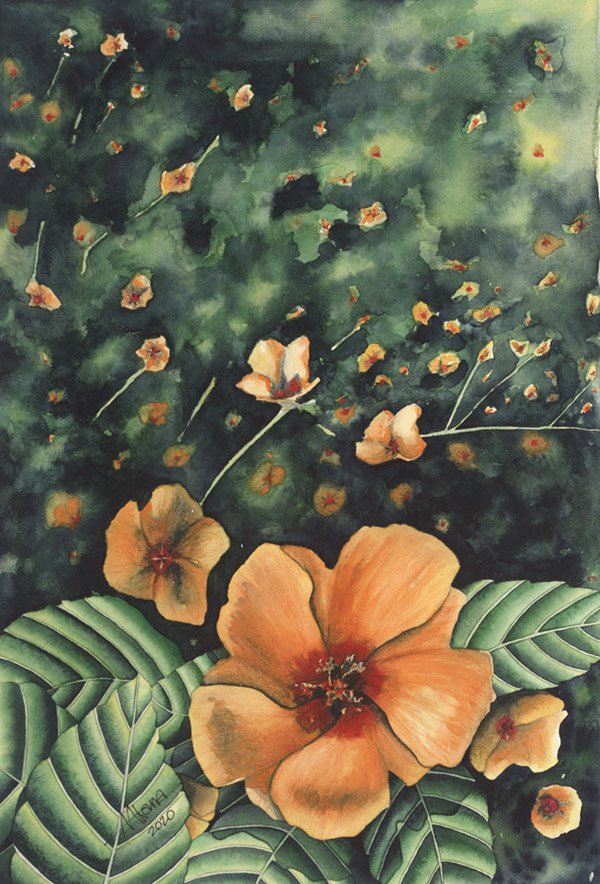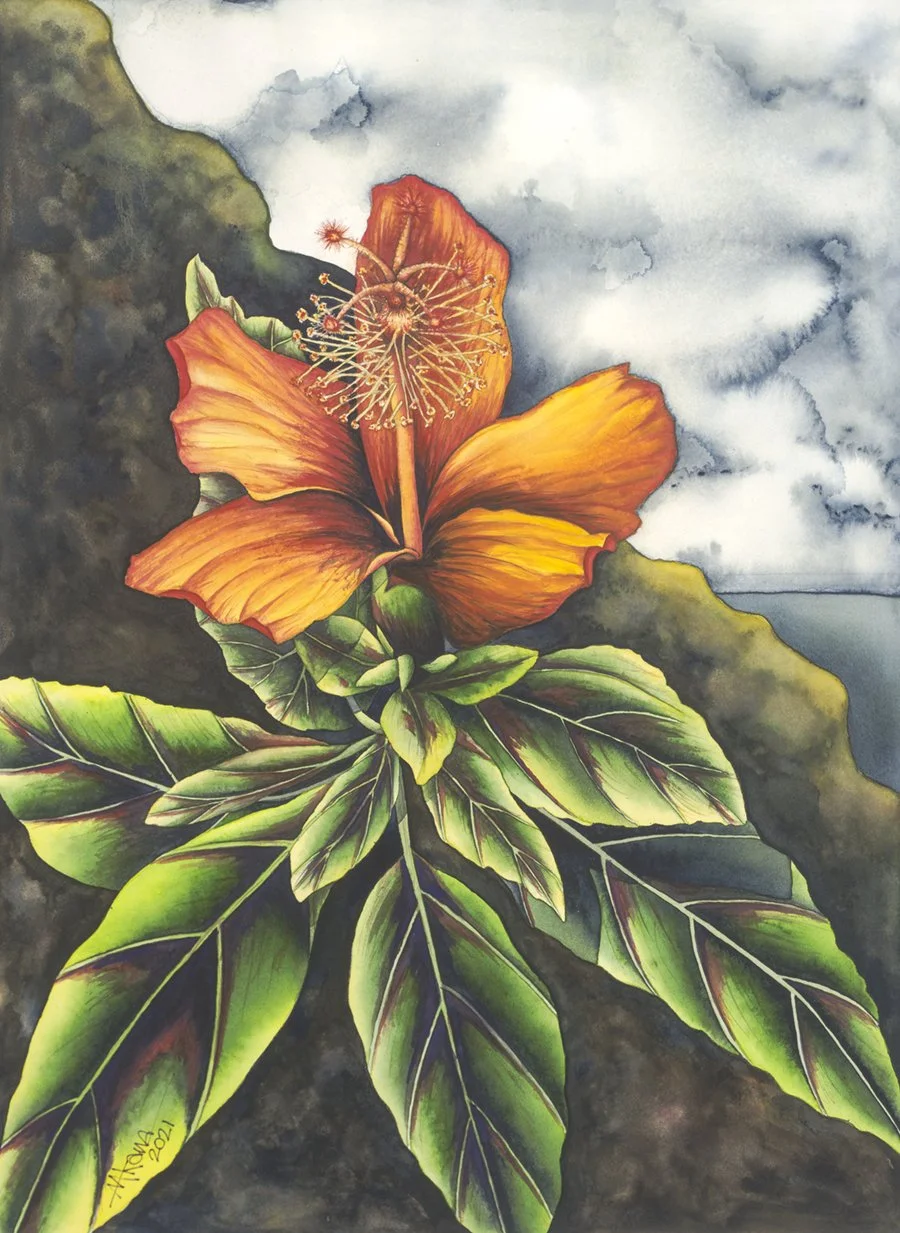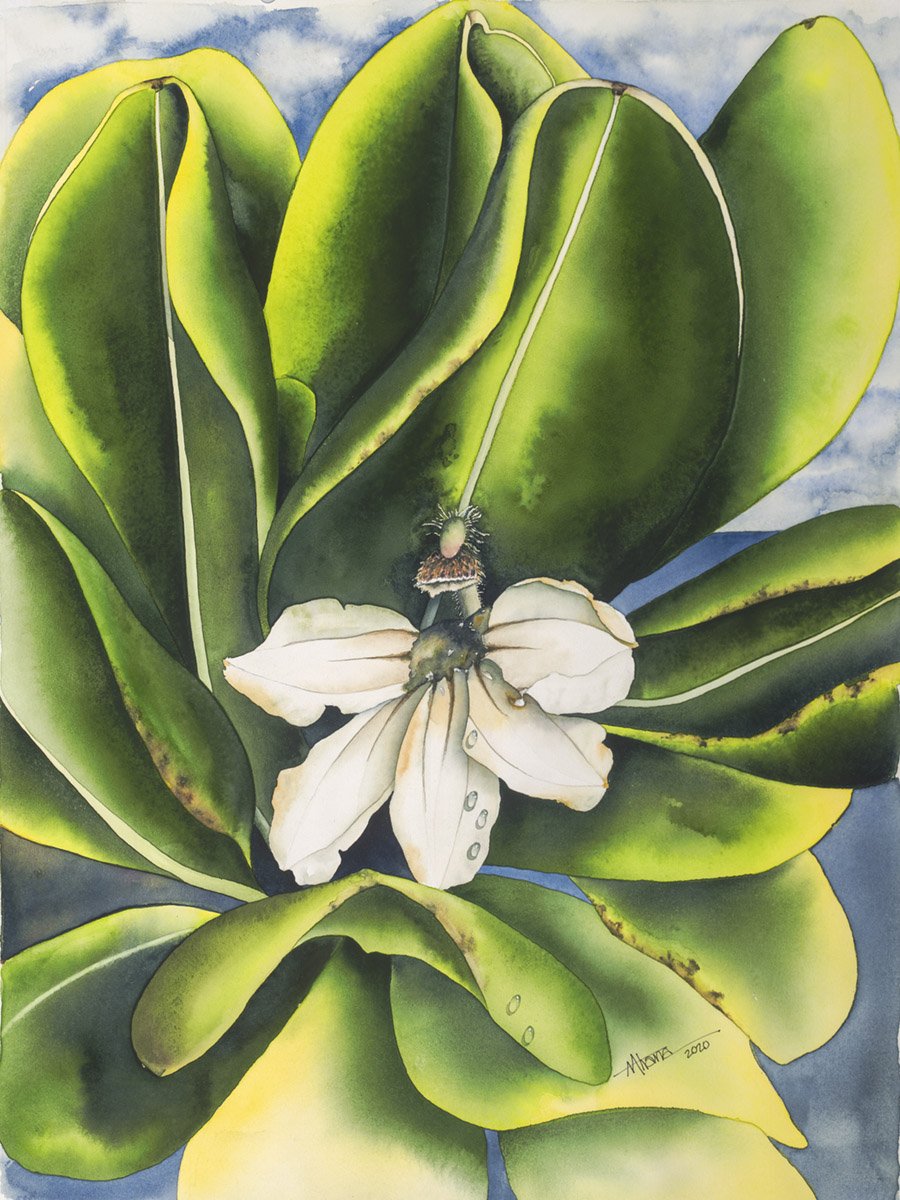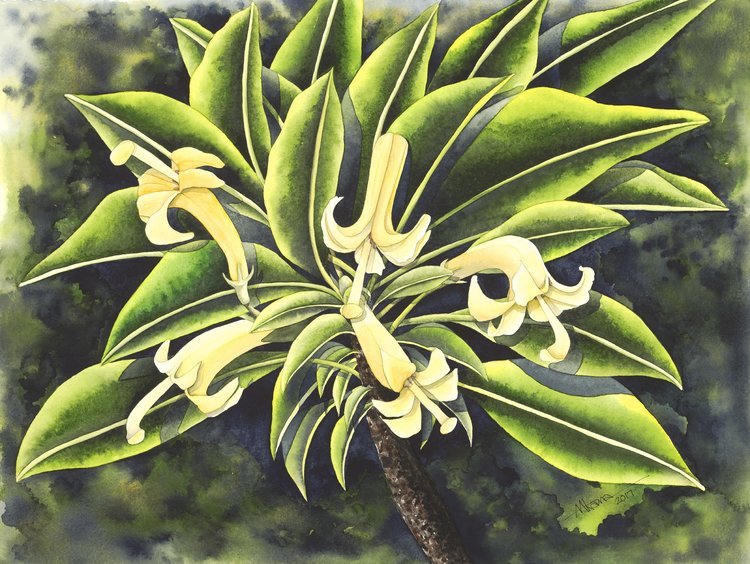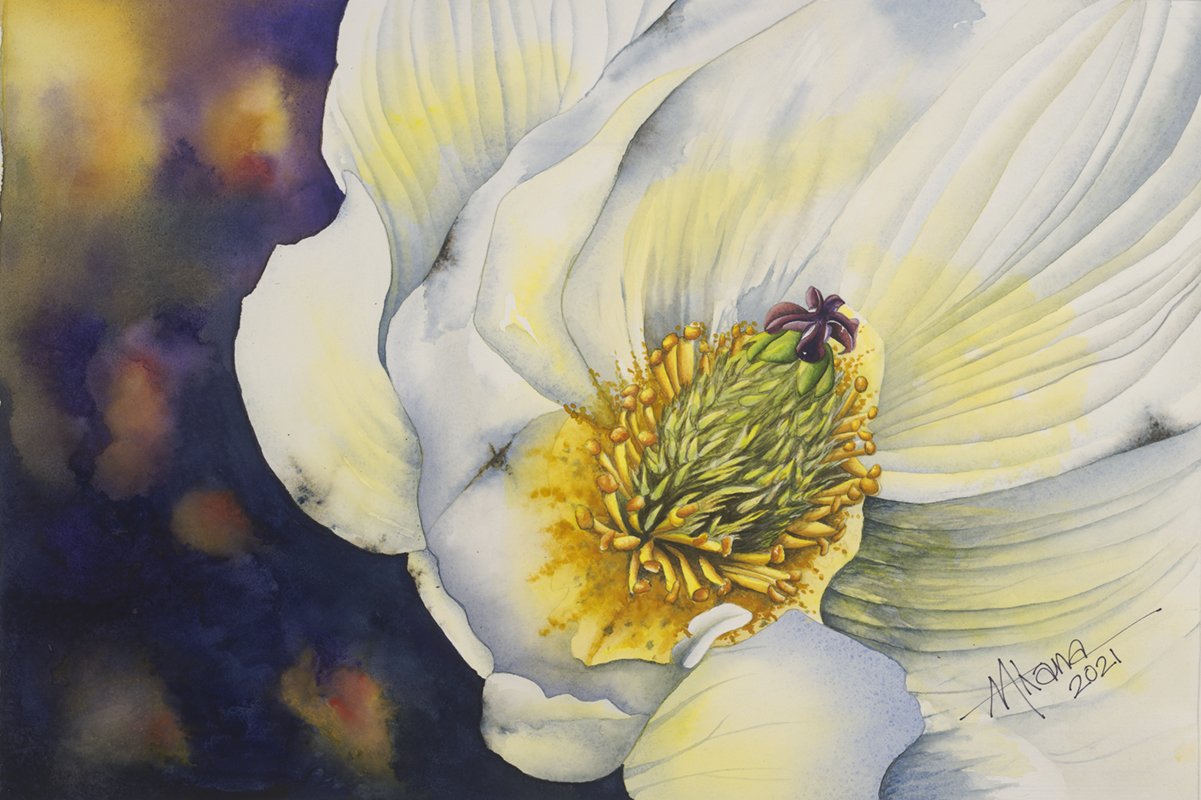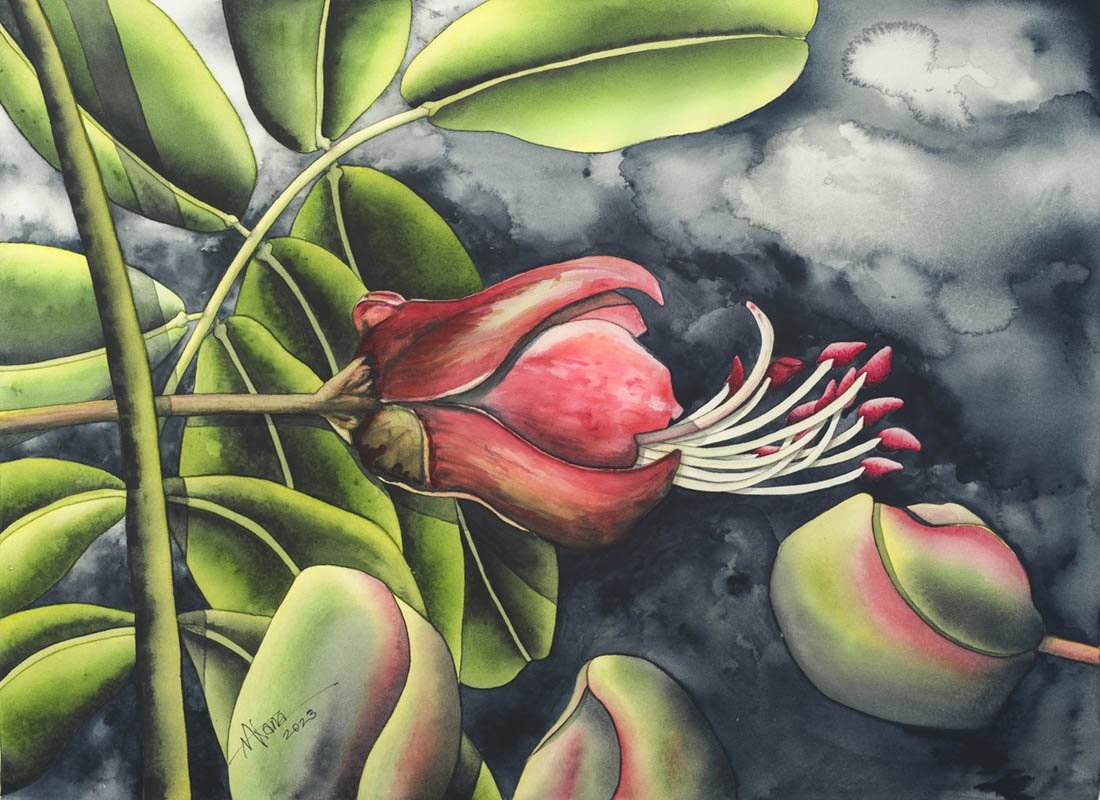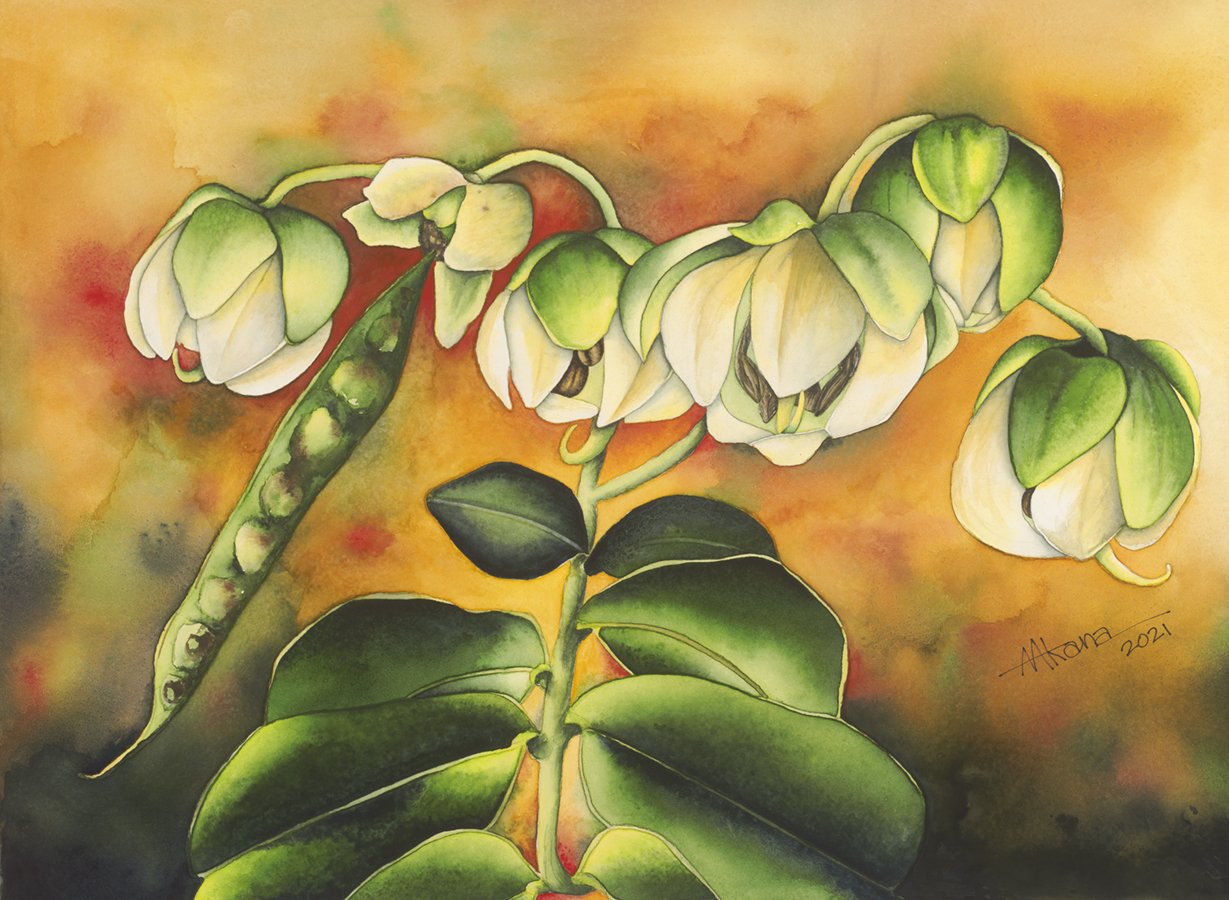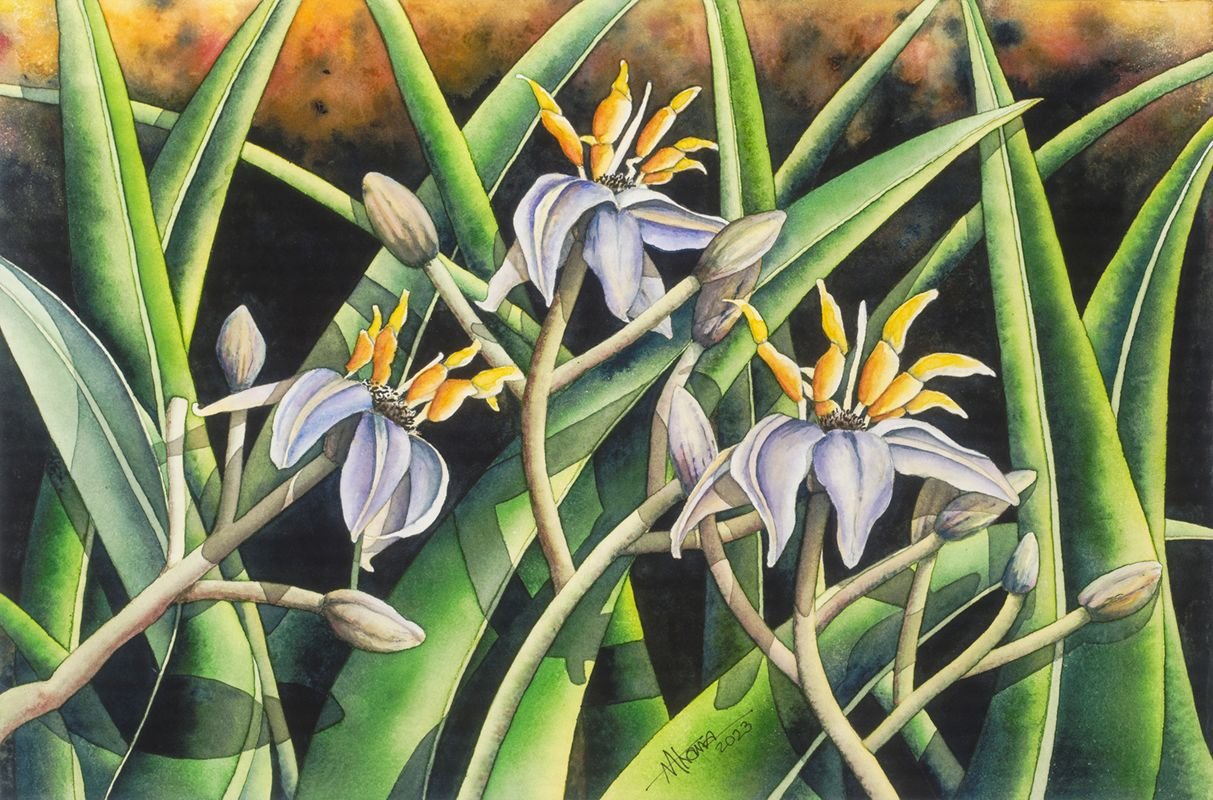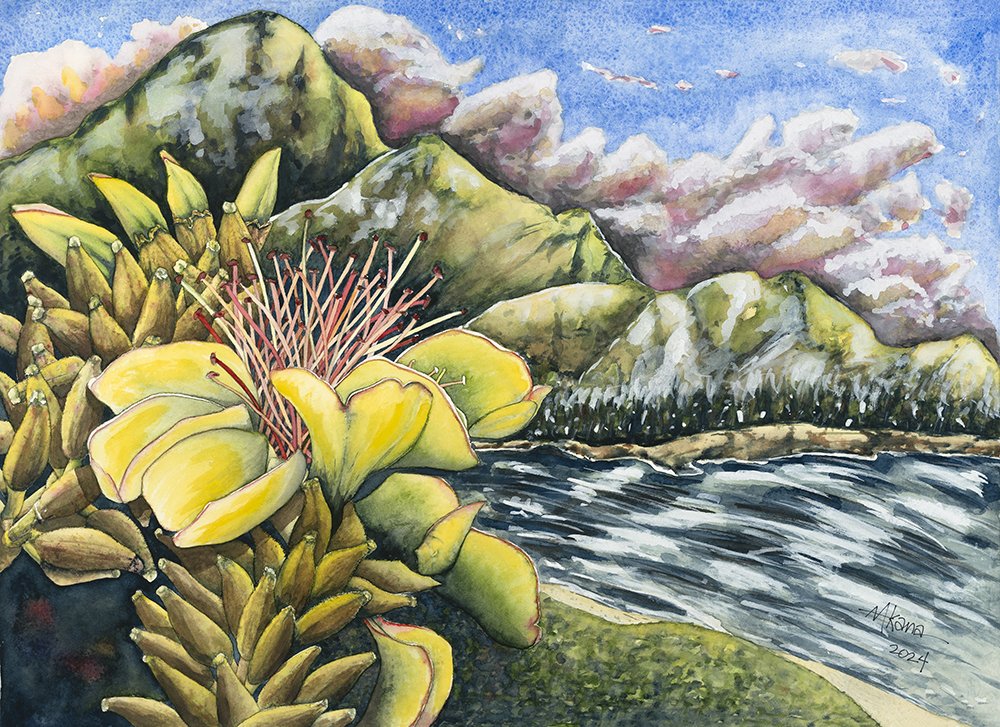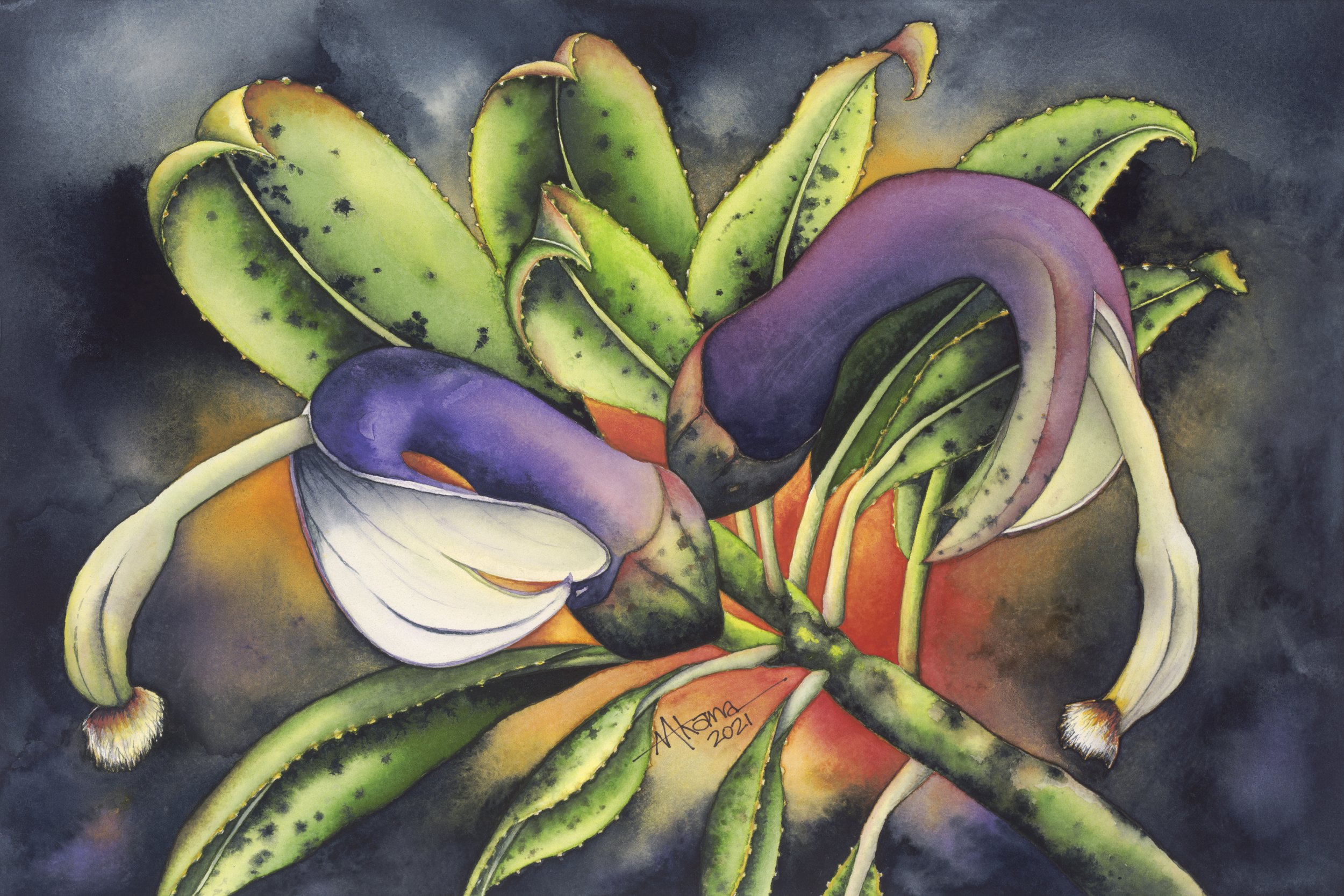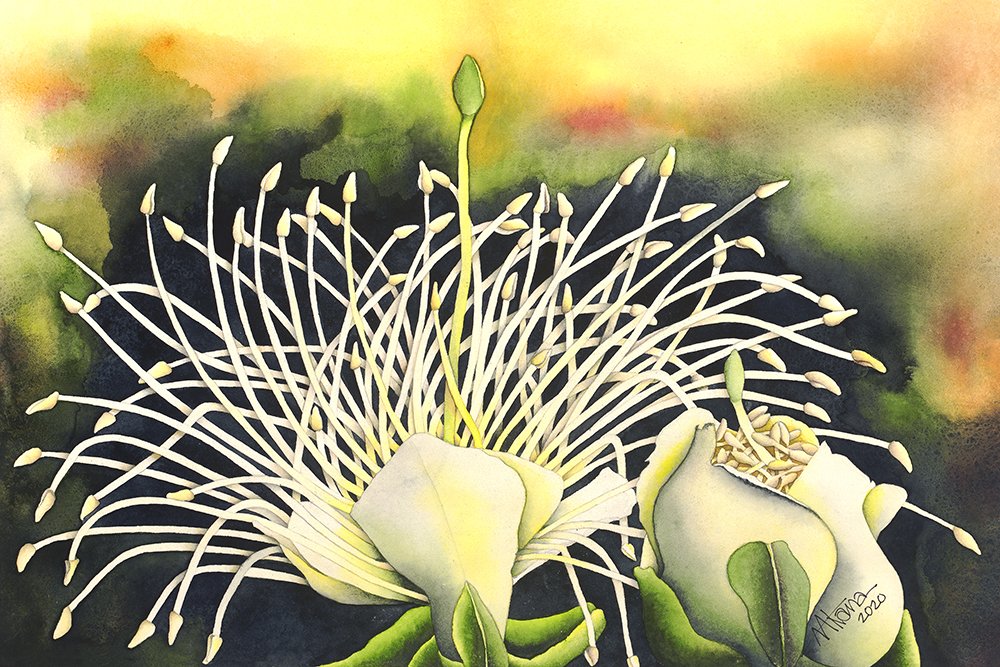Indigenous Species Series
Alan Akana began painting flowers of indigenous Hawaiian species in the fall of 2014. Through his watercolors, Alan hopes to spread awareness about Hawaii's many rare and native flowering plants. Greeting cards and numbered prints of these watercolors are available for purchase at our gallery.
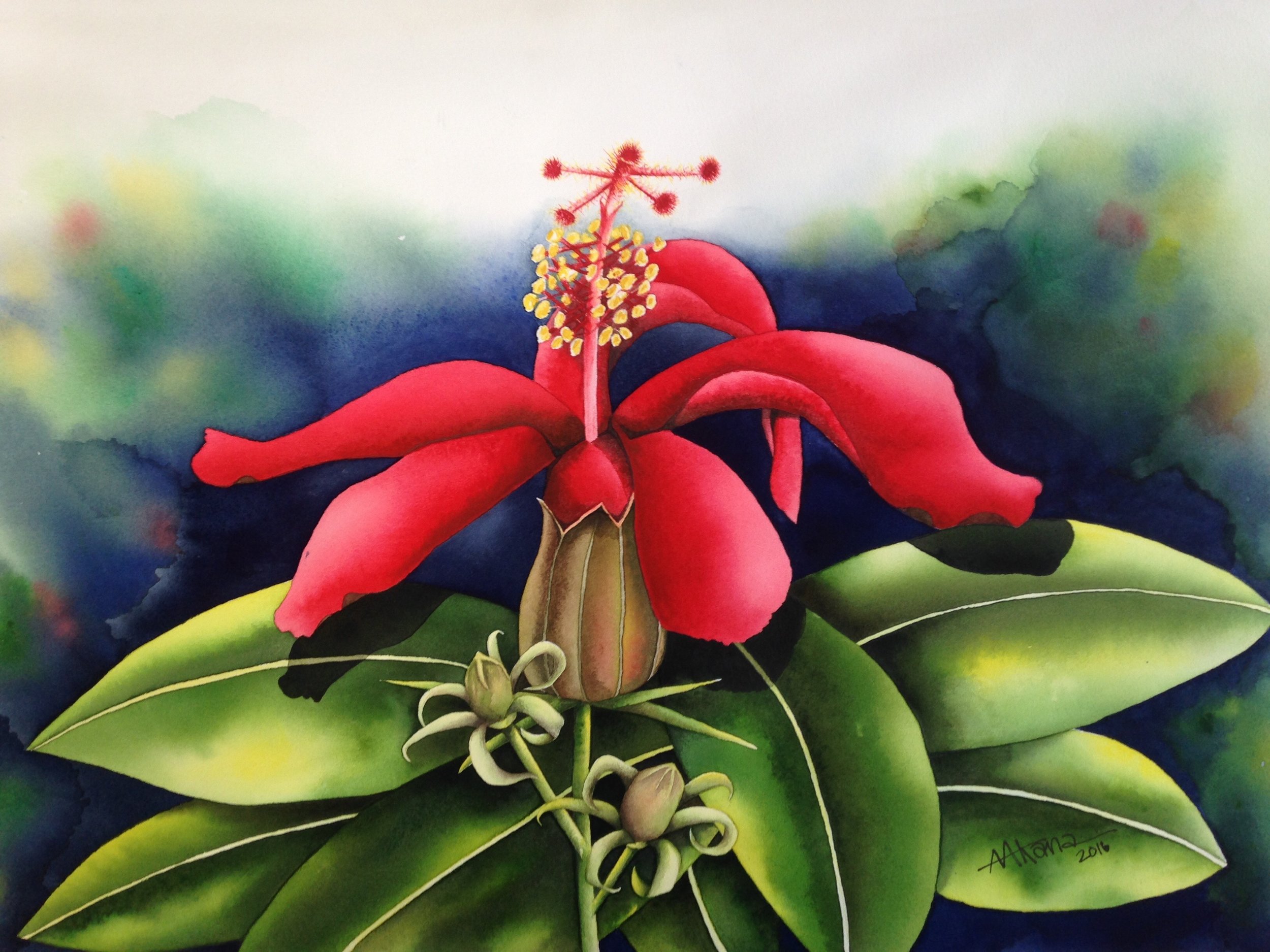
Koki‘o ‘Ula
Hibiscus clayi
Translated "red hibiscus" in the Hawaiian language, this striking flower has deep red, downward-curved petals, which are delicate and thin.
Like many endemic flowers of Hawaii, this hibiscus has been endangered for years due to competition from alien plants and habitat degradation.
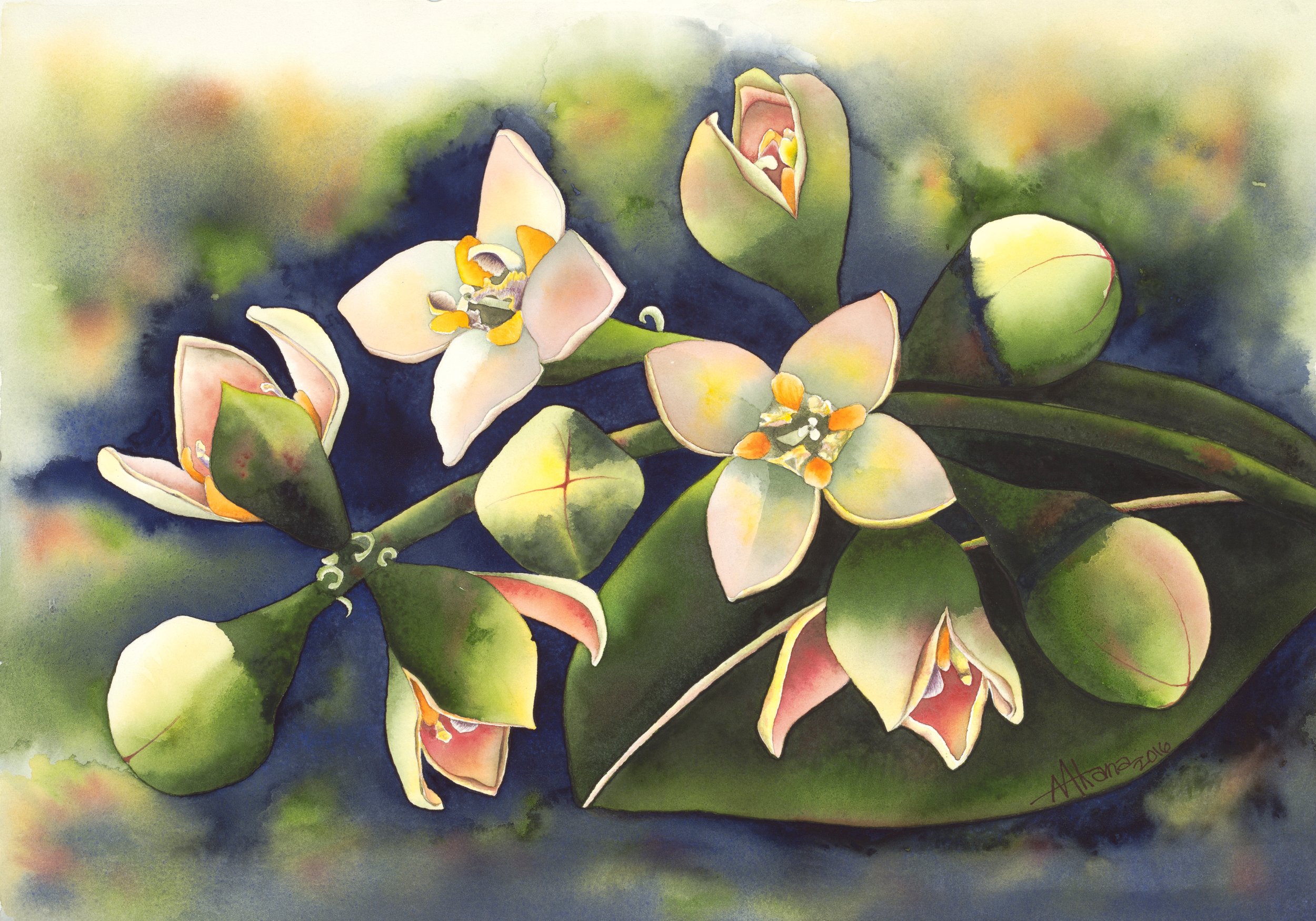
‘Iliahi Trail
Santalum freycinetianum
‘Iliahi is one of four Hawaiian species of sandalwood; it once grew in forests on all of the main Hawaiian Islands and is endemic to the Hawaiian Islands.
Once thriving throughout the islands of Hawaii, the sandalwood trade of the late 18th to early 19th centuries nearly depleted the sandalwood forests. The ‘iliahi remains vulnerable and is rarely seen by locals or visitors.
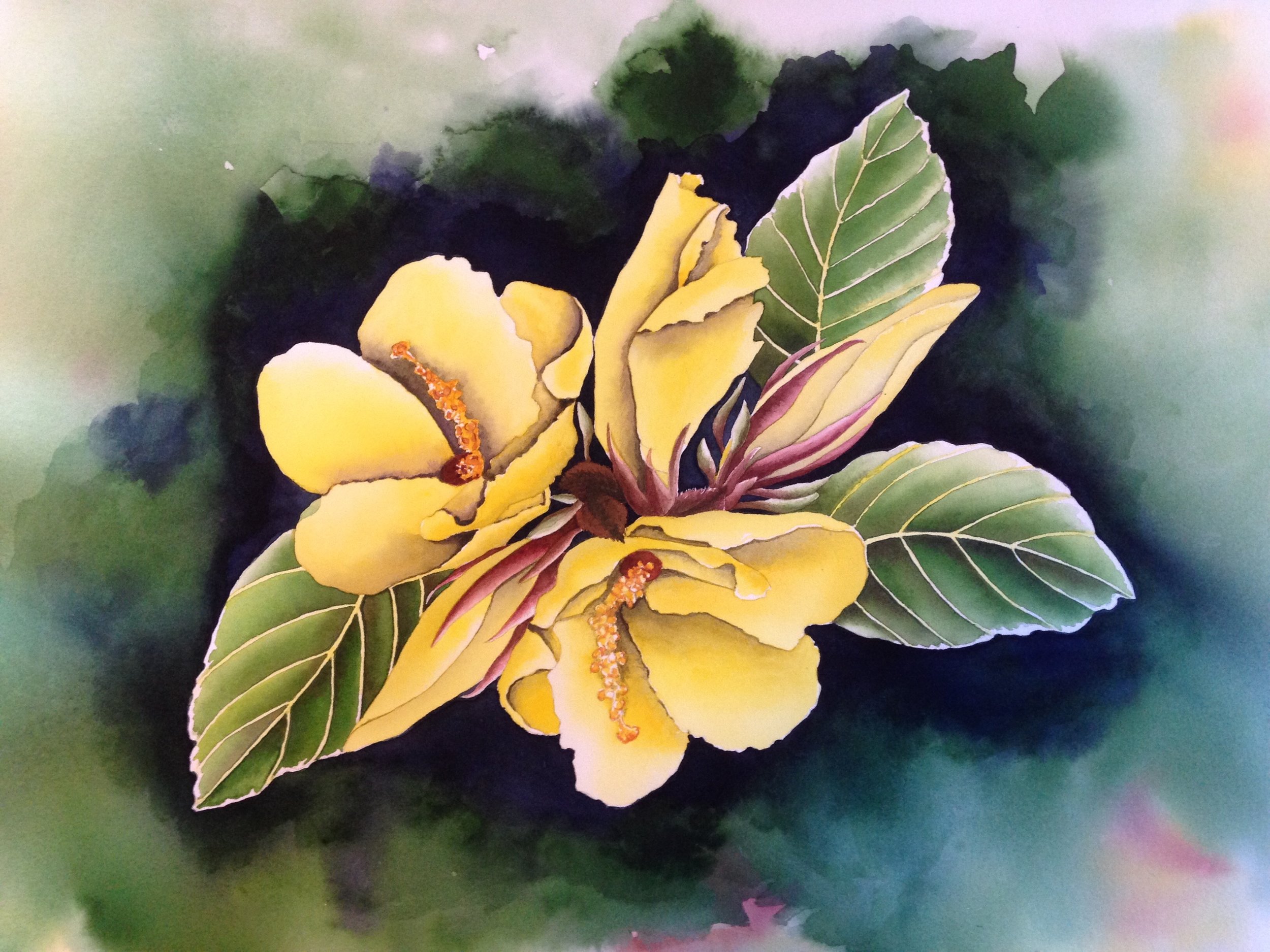
Ma‘o Hau Hele
Hibiscus brackenridgei
The Ma‘o Hau Hele inhabits dry forest and shrubland and is endemic to all of the main Hawaiian Islands. It has five yellow petals, with a touch of maroon at their base, and a “clustered” yellow stamen.
Like many endemic flowers of Hawaii, this hibiscus is endangered due to competition from alien plants, habitat alteration, and introduced mammals and insects. It became officially extinct on Kauai, though conservationists seek to restore it to its natural habitat.
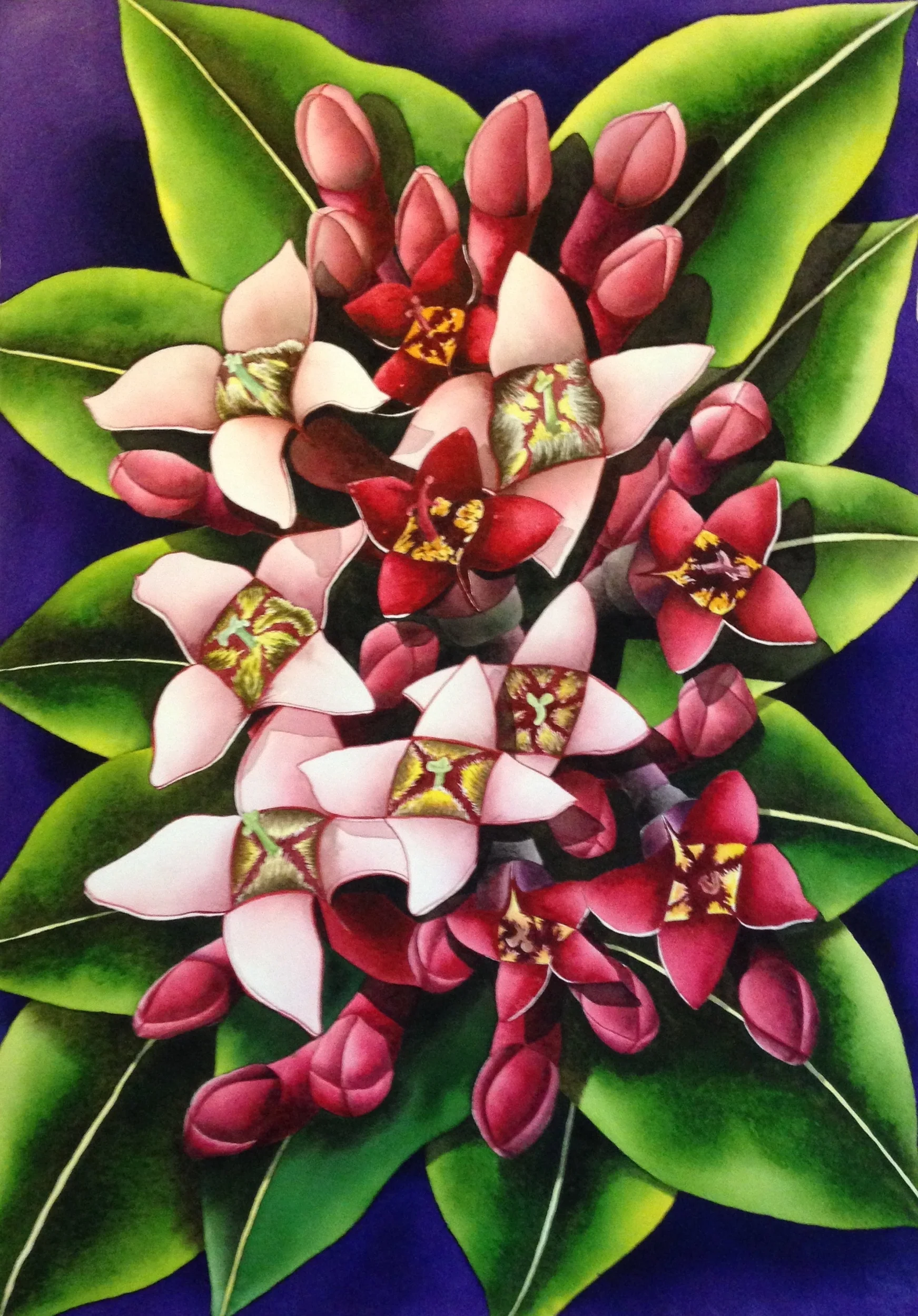
‘Iliahi
Santalum freycinetianum
‘Iliahi is one of four Hawaiian species of sandalwood; it once grew in forests on all of the main Hawaiian Islands and is endemic to the Hawaiian Islands.
Once thriving throughout the islands of Hawaii, the sandalwood trade of the late 18th to early 19th centuries nearly depleted the sandalwood forests. The ‘iliahi remains vulnerable and is rarely seen by locals or visitors.
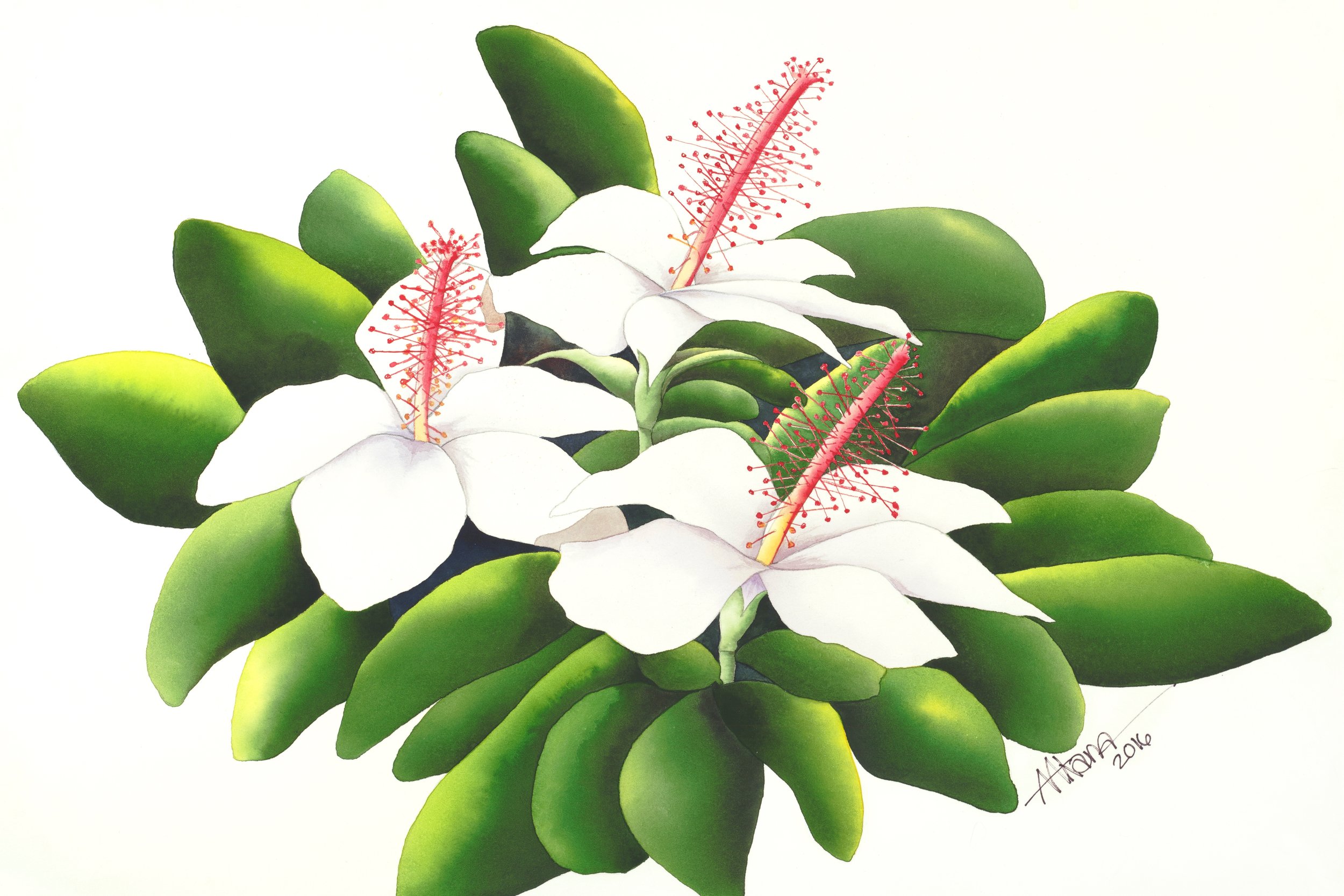
Koki‘o Ke‘oke‘o
Hibiscus waimeae
This fragrant flower, with its five soft white petals and brilliant red and yellow stamen, is endemic to Kauai, found in its natural environment on the northwestern part of Kauai, including Waimea Canyon.
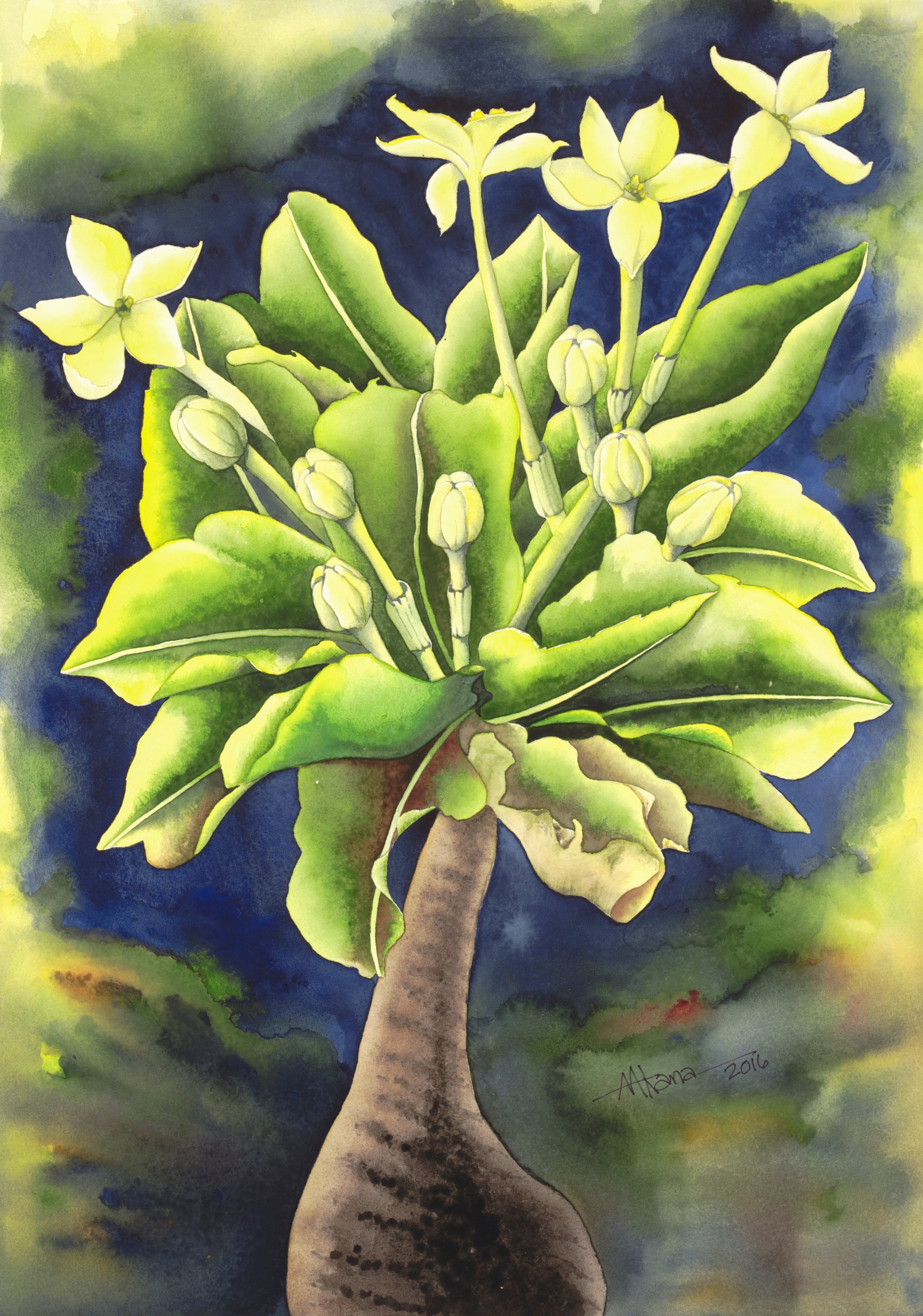
Alula
Brighamia insignis
Alula were once found on the windswept sea cliffs of Niihau and Kauai and are now believed to be extinct in the wild, except for one remaining plant (as of 2016), clinging to the high cliffs of the Na Pali Coast on Kauai.
It can grow up to 16 feet tall, with leaves and flowers growing only at the top of the plant, forming a large rounded rosette which can grow to 3 feet in diameter.
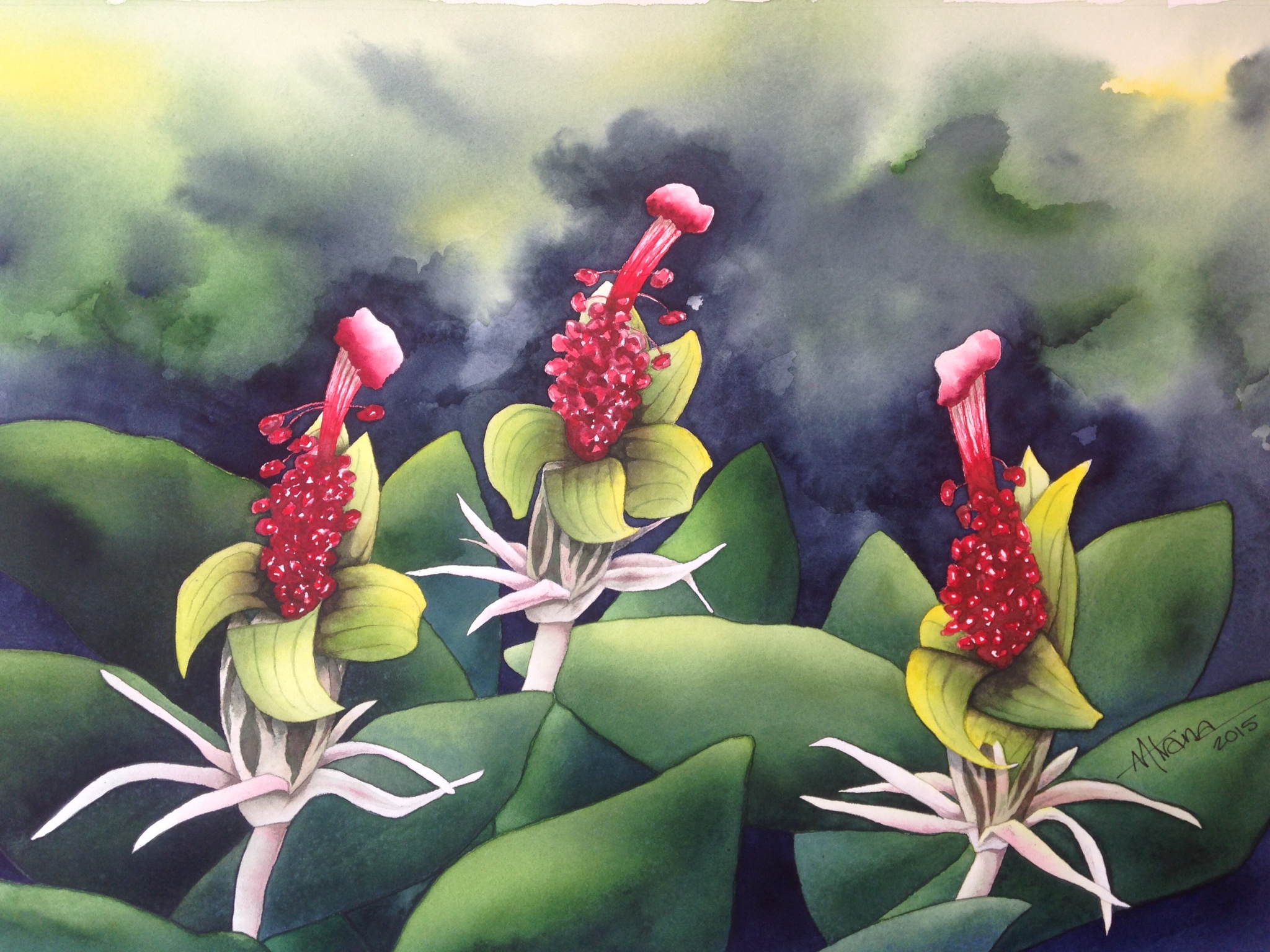
Hau Kuahiwi
Hibiscadelphus distans
Of the five species of Hau Kuahiwi, all endemic to the Hawaiian Islands, the one pictured here is believed to be the only one still surviving in the wild. It is known only to grow in Koaie Canyon, a tributary of Waimea Canyon on Kauai.
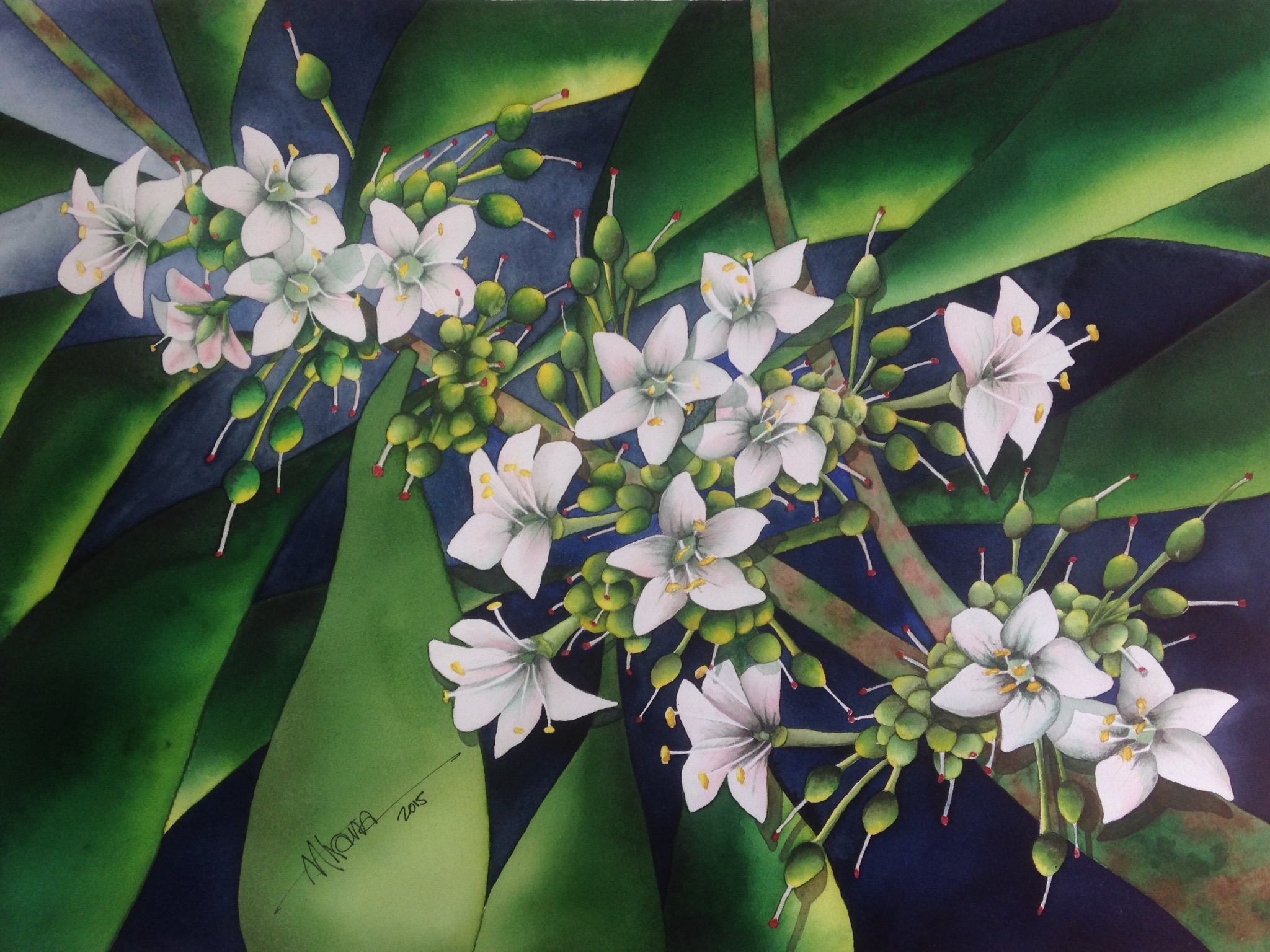
Naio
Myoporum sandwicense
Although there are other varieties of Myoporum found throughout the Pacific Basin, the naio is the only species that is indigenous to Hawaii and is only found there and in the Cook Islands.
It became known as “bastard sandalwood” because of its pleasant aroma similar to the Hawaiian sandalwood (‘iliahi). Early Hawaiians used the wood for building homes and boats, and used the twigs as spacers for their fishnets.
